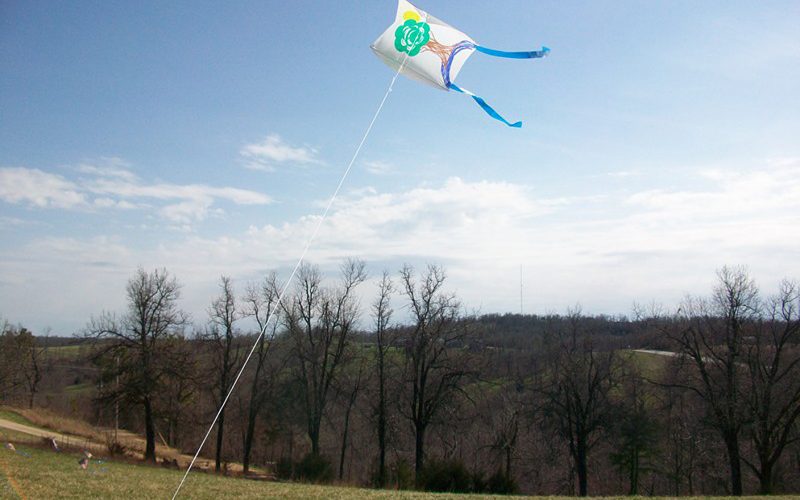March 22 marked the 24th anniversary of an event dear to Mary Poppin’s heart: “Art with an Altitude” Kite Festival at Turpentine Creek Wildlife Refuge. This was my first time attending the festival, and the experience taught me a lot about fancy thousand-dollar kites as well as inexpensive ones made of plastic bags that might have otherwise tried to fly themselves, as litter, up to the highest heights. True, some people did accidentally send their kites soaring into treetops, but for the most part, flying kites is a sustainable activity.
According to Steve Rogers, co-owner of KaleidoKites in Eureka Springs, “Making and flying kites is a ‘green’ sport families can share. It’s wind-fueled and gets kids away from sedentary activities like TV viewing and video games.” KaleidoKite staff was available during the festival to assist children (or big kids like me) that wanted to make and design their own kite. And it’s all for a great cause — according to Turpentine Creek’s website, the event is free but donations are requested if you want to make your own kite. “Proceeds finance rescue and ongoing care for over 135 tigers, lions, cougars and other wildlife that make the sanctuary a life-long home.”
Kites can be made out of almost any lightweight material, making them a perfect project for recycled bags. There are quilted kites sewn together with fabric squares, paper kites with painted designs, kites made from plastic bags, and many other varieties. There are literally dozens of kinds of kites that can fly in light to moderate winds. For example: sled, barn door, rokkaku, delta, roller, dopero, and the classic diamond kite shapes. Box kites are fun, too, to fly in moderate winds.
To make your own “sled kite” (a basic and inexpensive design) you’ll need two 12-inch wooden or bamboo BBQ skewers, a transparent plastic bag, lightweight material of your choice for the tail, paint or permanent markers, scissors, a ruler, thread for the flying line, and clear tape. The plastic bag, when cut to proper dimensions, will become the sail, with ribbons or strips of colored plastic as a tail and skewers to help catch the wind and puff out the plastic like a pillow.
I highly recommend finding a template to copy from a website like Pinterest or My-Best-Kite.com, so that you get the dimensions correct and don’t miss the fine details. But you get the general idea. If you’d like to have assistance for your children to make and design their own sled kites, don’t miss next year’s kite festival — 2015 will be the festival’s 25th anniversary! Until then, why not go fly a kite at a local park? Visit TurpentineCreek.org for more information.
Ripples innovates solutions that maximize positive ripples in the world. We operate a 100% solar-hosted website with resources and services for individuals and non-profit organizations. For more information, visit: www.RipplesBlog.org











